
(a)
Interpretation:
Structural formula has to be drawn for a secondary arylamine with molecular formula
Concept introduction:
In chemistry Structure is the arrangement of
Depending on the number of carbon side chain of the amide, different types of amides can form.

If nitrogen atom of amine group is attached only to alkyl groups, then it is an aliphatic amine.
If nitrogen atom of amine group is attached to at least one aryl groups, then it is an
If nitrogen atom of amine group is a part of an aromatic ring, then it is a heterocyclic aromatic amine.
If nitrogen atom of amine group is a part of a ring, then it is a heterocyclic amine.
(a)
Explanation of Solution
Given molecular formula is
The compound is secondary amine so the nitrogen of amine group should be bonded with two carbon containing groups. Also this nitrogen atom must attach to an aryl group.
Therefore,
Structural formula of a secondary arylamine with molecular formula
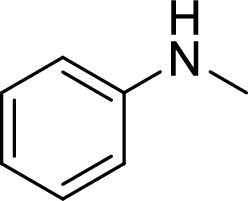
(b)
Interpretation:
Structural formula has to be drawn for a tertiary arylamine with molecular formula
Concept introduction:
In chemistry Structure is the arrangement of chemical bonds between atoms in a molecule, specifically which atoms are chemically bonded to what other atoms with what kind of chemical bond.
Amines are the derivatives of ammonia
Depending on the number of carbon side chain of the amide, different types of amides can form.

If nitrogen atom of amine group is attached only to alkyl groups, then it is an aliphatic amine.
If nitrogen atom of amine group is attached to at least one aryl groups, then it is an aromatic amine.
If nitrogen atom of amine group is a part of an aromatic ring, then it is a heterocyclic aromatic amine.
If nitrogen atom of amine group is a part of a ring, then it is a heterocyclic amine.
(b)
Explanation of Solution
Given molecular formula is
The compound is secondary amine so the nitrogen of amine group should be bonded with three carbon containing groups. Also this nitrogen atom must attach to an aryl group.
Therefore,
Structural formula of a tertiary arylamine with molecular formula
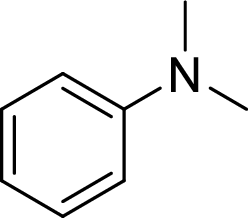
(c)
Interpretation:
Structural formula has to be drawn for a primary aliphatic amine with molecular formula
Concept introduction:
In chemistry Structure is the arrangement of chemical bonds between atoms in a molecule, specifically which atoms are chemically bonded to what other atoms with what kind of chemical bond.
Amines are the derivatives of ammonia
Depending on the number of carbon side chain of the amide, different types of amides can form.

If nitrogen atom of amine group is attached only to alkyl groups, then it is an aliphatic amine.
If nitrogen atom of amine group is attached to at least one aryl groups, then it is an aromatic amine.
If nitrogen atom of amine group is a part of an aromatic ring, then it is a heterocyclic aromatic amine.
If nitrogen atom of amine group is a part of a ring, then it is a heterocyclic amine.
(c)
Explanation of Solution
Given molecular formula is
The compound is primary amine so the nitrogen of amine group should be bonded with only one carbon containing group. Also this nitrogen atom must attach to an alkyl group.
Therefore,
Structural formula of a primary aliphatic amine with molecular formula
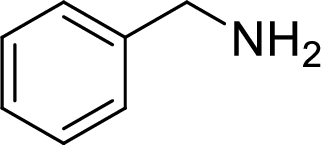
(d)
Interpretation:
Structural formula has to be drawn for a chiral primary amine with molecular formula
Concept introduction:
In chemistry Structure is the arrangement of chemical bonds between atoms in a molecule, specifically which atoms are chemically bonded to what other atoms with what kind of chemical bond.
Amines are the derivatives of ammonia
Depending on the number of carbon side chain of the amide, different types of amides can form.

Chiral carbon: A carbon is said to be chiral carbon if it is bonded to four different substituents.
If nitrogen atom of amine group is attached only to alkyl groups, then it is an aliphatic amine.
If nitrogen atom of amine group is attached to at least one aryl groups, then it is an aromatic amine.
If nitrogen atom of amine group is a part of an aromatic ring, then it is a heterocyclic aromatic amine.
If nitrogen atom of amine group is a part of a ring, then it is a heterocyclic amine.
(d)
Explanation of Solution
Given molecular formula is
The compound is primary amine so the nitrogen of amine group should be bonded with only one carbon containing group. Since the compound is chiral, one carbon atom should be bonded with four different groups.
Therefore,
Structural formula of a chiral primary amine with molecular formula
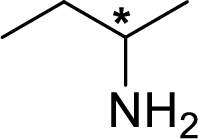
Chiral carbon is labelled with asterisk (*) as above.
(e)
Interpretation:
Structural formula has to be drawn for a tertiary heterocyclic amine with molecular formula
Concept introduction:
In chemistry Structure is the arrangement of chemical bonds between atoms in a molecule, specifically which atoms are chemically bonded to what other atoms with what kind of chemical bond.
Amines are the derivatives of ammonia
Depending on the number of carbon side chain of the amide, different types of amides can form.

If nitrogen atom of amine group is attached only to alkyl groups, then it is an aliphatic amine.
If nitrogen atom of amine group is attached to at least one aryl groups, then it is an aromatic amine.
If nitrogen atom of amine group is a part of an aromatic ring, then it is a heterocyclic aromatic amine.
If nitrogen atom of amine group is a part of a ring, then it is a heterocyclic amine.
(e)
Explanation of Solution
Given molecular formula is
The compound is secondary amine so the nitrogen of amine group should be bonded with three carbon containing groups. Also this nitrogen atom must be one of the atoms of the ring since the compound is a heterocyclic amine.
Therefore,
Structural formula of a tertiary heterocyclic amine with molecular formula
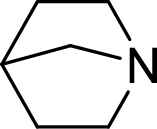
(f)
Interpretation:
Structural formula has to be drawn for a trisubstituted primary arylamine with molecular formula
Concept introduction:
In chemistry Structure is the arrangement of chemical bonds between atoms in a molecule, specifically which atoms are chemically bonded to what other atoms with what kind of chemical bond.
Amines are the derivatives of ammonia
Depending on the number of carbon side chain of the amide, different types of amides can form.

If nitrogen atom of amine group is attached only to alkyl groups, then it is an aliphatic amine.
If nitrogen atom of amine group is attached to at least one aryl groups, then it is an aromatic amine.
If nitrogen atom of amine group is a part of an aromatic ring, then it is a heterocyclic aromatic amine.
If nitrogen atom of amine group is a part of a ring, then it is a heterocyclic amine.
(f)
Explanation of Solution
Given molecular formula is
The compound is primary amine so the nitrogen of amine group should be bonded with only one carbon containing group. Also this nitrogen atom must attach to an aryl group that has three substituents.
Therefore,
Structural formula of a trisubstituted primary arylamine with molecular formula
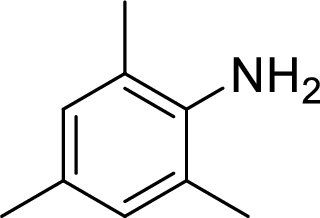
(g)
Interpretation:
Structural formula has to be drawn for a chiral quaternary ammonium salt with molecular formula
Concept introduction:
In chemistry Structure is the arrangement of chemical bonds between atoms in a molecule, specifically which atoms are chemically bonded to what other atoms with what kind of chemical bond.
Amines are the derivatives of ammonia
Depending on the number of carbon side chain of the amide, different types of amides can form.

Chirality: It refers to an atom in a molecule that contains four different substituents.
If nitrogen atom in amine group is attached with four atoms or group of atoms then the compound can be named as the salt of the corresponding amine (quaternary ammonium salt).
(g)
Explanation of Solution
Given molecular formula is
The compound is quaternary ammonium salt so the nitrogen of amine group should be bonded with group of atoms. Since the compound is chiral, the four groups attached to this nitrogen should be different.
Therefore,
Structural formula of a chiral quaternary ammonium salt with molecular formula
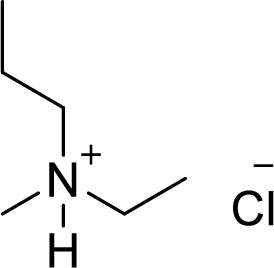
Chiral atom is labelled with asterisk (*) as above.
Want to see more full solutions like this?
Chapter 23 Solutions
Student Study Guide and Solutions Manual for Brown/Iverson/Anslyn/Foote's Organic Chemistry, 8th Edition
- The predominant components of our atmosphere are N₂, O₂, and Ar in the following mole fractions: χN2 = 0.780, χO2 = 0.21, χAr = 0.01. Assuming that these molecules act as ideal gases, calculate ΔGmix, ΔSmix, and ΔHmix when the total pressure is 1 bar and the temperature is 300 K.arrow_forwarddG = Vdp - SdT + μA dnA + μB dnB + ... so that under constant pressure and temperature conditions, the chemical potential of a component is the rate of change of the Gibbs energy of the system with respect to changing composition, μJ = (∂G / ∂nJ)p,T,n' Using first principles prove that under conditions of constant volume and temperature, the chemical potential is a measure of the partial molar Helmholtz energy (μJ = (∂A / ∂nJ)V,T,n')arrow_forwardThe vapor pressure of dichloromethane at 20.0 °C is 58.0 kPa and its enthalpy of vaporization is 32.7 kJ/mol. Estimate the temperature at which its vapor pressure is 66.0 kPa.arrow_forward
- Draw the structure of A, the minor E1 product of the reaction. Cl Skip Part Check F1 esc CH_CH OH, D 3 2 Click and drag to start drawing a structure. 80 R3 F4 F2 F3 @ 2 # $ 4 3 Q W 95 % KO 5 F6 A F7 × G ☐ Save For Later Sub 2025 McGraw Hill LLC. All Rights Reserved. Terms of Use | Privacy C ►II A A F8 F9 F10 FL 6 7 88 & * 8 9 LLI E R T Y U A S D lock LL F G H 0 P J K L Z X C V B N M 9 Harrow_forwardFrom the choices given, which two substances have the same crystal structure? (Select both) Group of answer choices ZnS (zincblende) Diamond TiO2 (rutile) ZnS (wurtzite)arrow_forwardPotassium (K) blends with germanium (Ge) to form a Zintl phase with a chemical formula of K4Ge4. Which of the following elements would you expect potassium to blend with to form an alloy? Electronegativities: As (2.0), Cl (3.0), Ge (1.8), K (0.8), S (2.5), Ti (1.5) Group of answer choices Arsenic (As) Sulfur (S) Chlorine (Cl) Titanium (Ti)arrow_forward
- Consider two elements, X and Z. Both have cubic-based unit cells with the same edge lengths. X has a bcc unit cell while Z has a fcc unit cell. Which of the following statements is TRUE? Group of answer choices Z has a larger density than X X has more particles in its unit cell than Z does X has a larger density than Z Z has a larger unit cell volume than Xarrow_forwardHow many particles does a face-centered cubic (fcc) unit cell contain? Group of answer choices 2 14 8 4arrow_forwardV Highlight all of the carbon atoms that have at least one beta (B) hydrogen, using red for one ẞ hydrogen, blue for two ẞ hydrogens, and green for three ẞ hydrogens. If none of the carbon atoms have ẞ hydrogens, check the box underneath the molecule. ED X None of the carbon atoms have ẞ hydrogens. Explanation esc 2 Check * F1 F2 1 2 80 # 3 Q W tab A caps lock shift fn control F3 N S option O 694 $ F4 F5 F6 005 % E R D F LL 6 olo 18 Ar B © 2025 McGraw Hill LLC. All Rights Reserved. Terms of Use | Privacy Center | Accessibility A DII F7 F8 87 & * 8 T Y U G H 4 F9 F10 ( 9 0 E F11 F12 உ J K L + || X C V B N M H H command option commandarrow_forward
- Consider the reaction below and answer the following questions. Part 1 of 4 Br NaOCH2CH3 Identify the mechanisms involved. Check all that apply. SN 1 SN 2 E1 E2 None of the above Part 2 of 4 Skip Part Check esc F1 F2 lock 1 2 Q W A S #3 80 F3 F4 F5 F6 Save For © 2025 McGraw Hill LLC. All Rights Reserved. Terms ˇˇ % & 4 5 6 89 7 IK A 分 བ F7 F8 F9 F * E R T Y U 8 9 D F G H K V B N M 0 Oarrow_forwardWhat kind of holes are not generated when solid-state particles adopt a close packing pattern? Group of answer choices tetrahedral cubic octahedral None of the other choices are correctarrow_forwardFor the reaction below: 1. Draw all reasonable elimination products to the right of the arrow. 2. In the box below the reaction, redraw any product you expect to be a major product. 田 Major Product: Check ☐ + I Na OH esc F1 F2 2 1 @ 2 Q W tab A caps lock S #3 80 F3 69 4 σ F4 % 95 S Click and drag to sta drawing a structure mm Save For Later 2025 McGraw Hill LLC. All Rights Reserved. Terms of Use GO DII F5 F6 F7 F8 F9 F10 6 CO 89 & 7 LU E R T Y U 8* 9 0 D F G H J K L Z X C V B N M 36arrow_forward
 Organic ChemistryChemistryISBN:9781305580350Author:William H. Brown, Brent L. Iverson, Eric Anslyn, Christopher S. FootePublisher:Cengage Learning
Organic ChemistryChemistryISBN:9781305580350Author:William H. Brown, Brent L. Iverson, Eric Anslyn, Christopher S. FootePublisher:Cengage Learning Introductory Chemistry: An Active Learning Approa...ChemistryISBN:9781305079250Author:Mark S. Cracolice, Ed PetersPublisher:Cengage Learning
Introductory Chemistry: An Active Learning Approa...ChemistryISBN:9781305079250Author:Mark S. Cracolice, Ed PetersPublisher:Cengage Learning Chemistry & Chemical ReactivityChemistryISBN:9781337399074Author:John C. Kotz, Paul M. Treichel, John Townsend, David TreichelPublisher:Cengage Learning
Chemistry & Chemical ReactivityChemistryISBN:9781337399074Author:John C. Kotz, Paul M. Treichel, John Townsend, David TreichelPublisher:Cengage Learning Chemistry & Chemical ReactivityChemistryISBN:9781133949640Author:John C. Kotz, Paul M. Treichel, John Townsend, David TreichelPublisher:Cengage Learning
Chemistry & Chemical ReactivityChemistryISBN:9781133949640Author:John C. Kotz, Paul M. Treichel, John Townsend, David TreichelPublisher:Cengage Learning Chemistry for Today: General, Organic, and Bioche...ChemistryISBN:9781305960060Author:Spencer L. Seager, Michael R. Slabaugh, Maren S. HansenPublisher:Cengage Learning
Chemistry for Today: General, Organic, and Bioche...ChemistryISBN:9781305960060Author:Spencer L. Seager, Michael R. Slabaugh, Maren S. HansenPublisher:Cengage Learning




